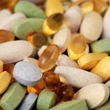
The 2017 report by the American Botanical Council shows the herbal supplement market’s strongest growth in over 15 years. Total US herbal supplement retail sales exceeded $8 billion – an 8.5% jump from 2016.
The top selling herbs in the mainstream market, which includes supermarkets and drugstores, were horehound, echinacea, cranberry, ivy leaf, and turmeric. Horehound held on to the top spot for the 5th year in a row. It is commonly used in cough remedies, including Ricola cough drops, which likely accounts for its steady presence on the top sellers list. Turmeric saw the biggest jump in sales with a 46.7% increase from 2016, totaling over $32 million. Turmeric sales have benefited from a variety of consumer trends, including increased interest in Ayurvedic medicine, functional foods, and “wellness tonics.”
In the natural market, which includes supplement and specialty retail stores, there was a strong increase in sales of Ayurvedic herbs. Black seed sales increased by over 200%, and moringa increased by 30%. Turmeric, wheatgrass/barley, flaxseed/flaxseed oil, aloe, and elderberry were the overall top sellers. Also, for the first year ever, cannabidiol (CBD), a chemical in the Cannabis plant, ranked among the top sellers, coming in at number 12. Total CBD sales reached $7.5 million, a 303% increase from 2016.
The information in this brief report is intended for informational purposes only, and is meant to help users better understand health concerns. This information should not be interpreted as specific medical advice. Users should consult with a qualified healthcare provider for specific questions regarding therapies, diagnosis and/or health conditions, prior to making therapeutic decisions. Copyright © 2024 NatMed. Commercial distribution or reproduction prohibited. NatMed is the leading provider of high-quality, evidence-based, clinically-relevant information on natural medicine, dietary supplements, herbs, vitamins, minerals, functional foods, diets, complementary practices, CAM modalities, exercises and medical conditions. Monograph sections include interactions with herbs, drugs, foods and labs, contraindications, depletions, dosing, toxicology, adverse effects, pregnancy and lactation data, synonyms, safety and effectiveness.
